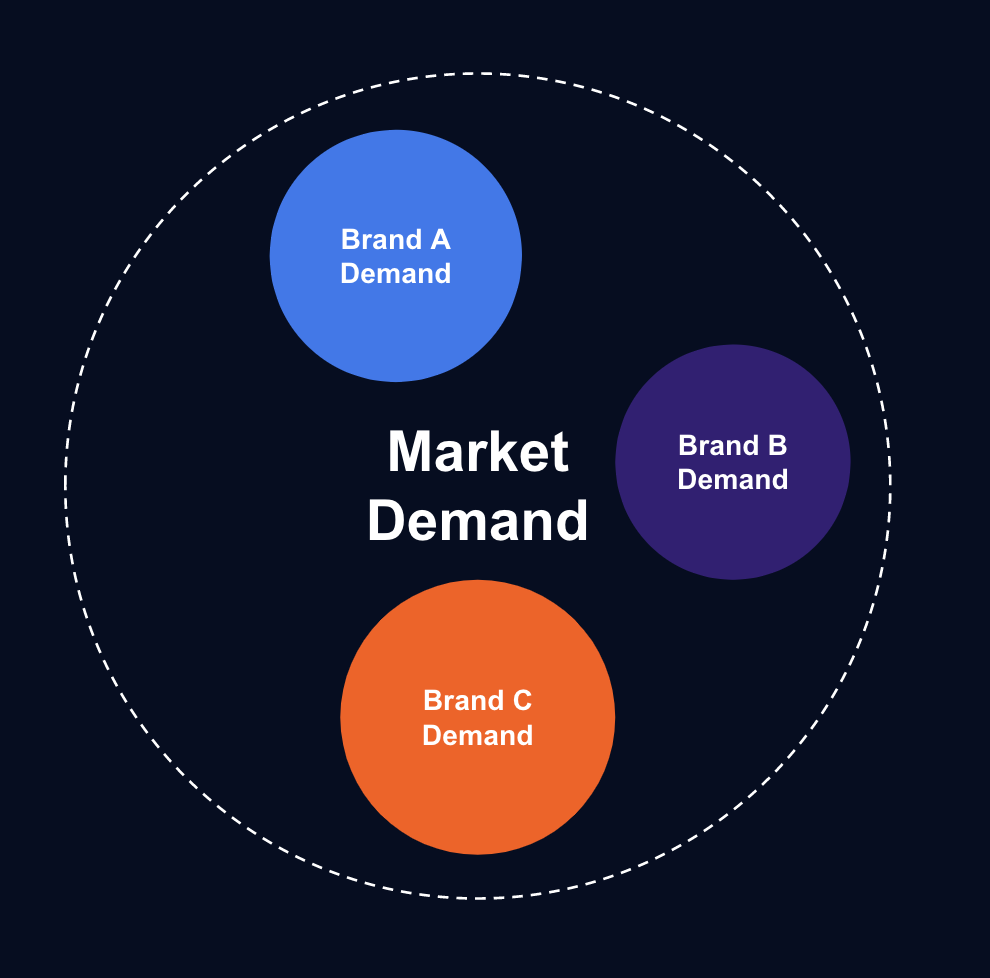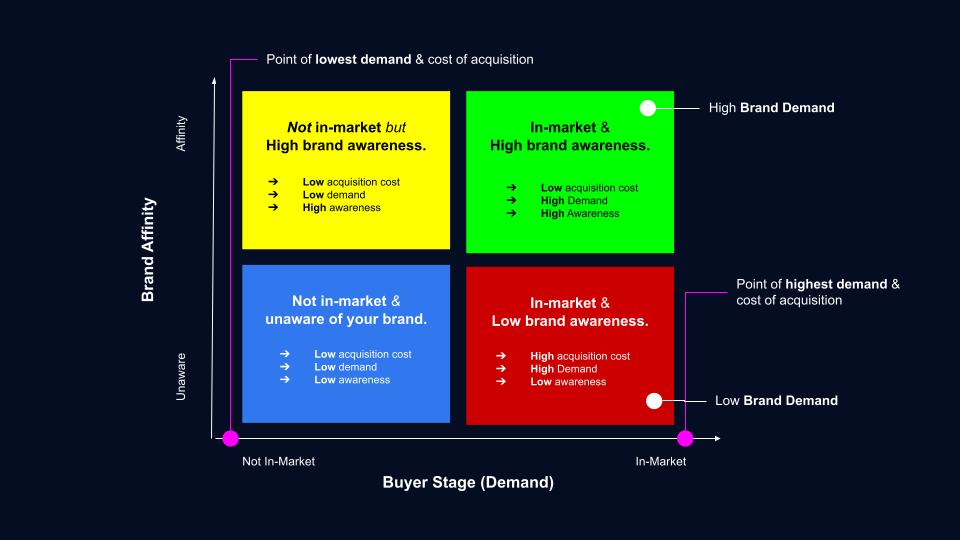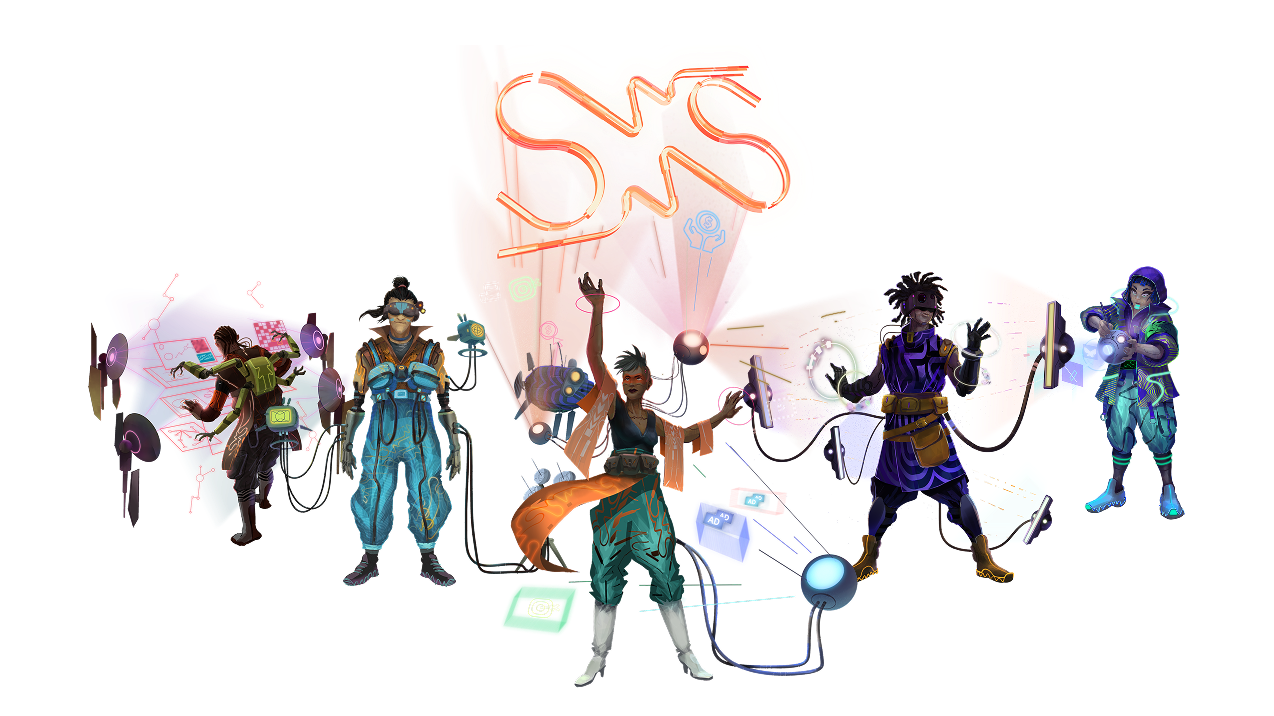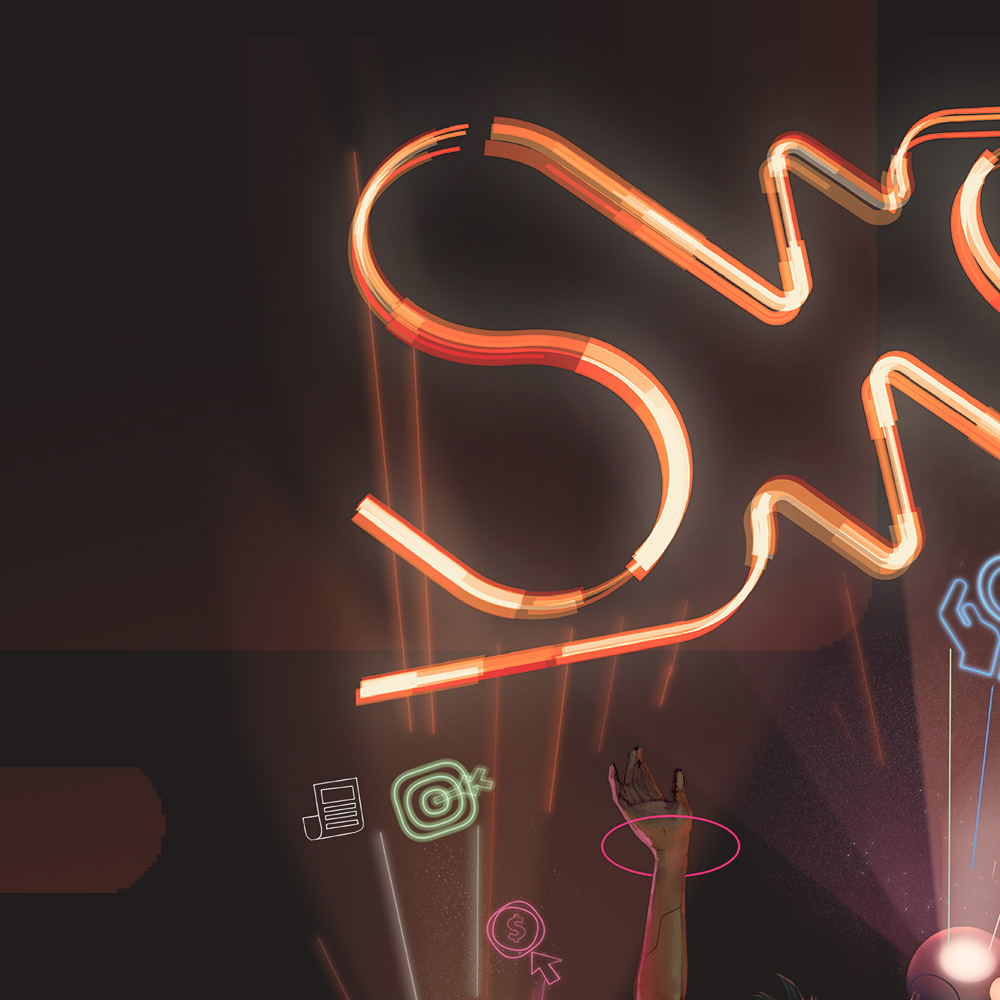
Demand Generation is the latest catch all term used for generating revenue for a business. In this article I’ll talk through you through what demand generation actually means and how brand has a big impact on the success of generating demand.
Demand Generation is often a mis-used and misunderstood term that some people use as a way of describing a broad digital marketing strategy or inbound marketing as a whole, but in reality it's only one part of a strategy. It's also often confused with lead generation.
Demand generation and lead generation are not mutually exclusive. Lead generation and demand generation can overlap and work together. It is true, Lead Generation happens more towards the end of a buyer journey than demand generation but a lot of the time it’s really just a matter of terminology and they do crossover a lot.
As an example of this, one very common and useful demand generation tactic is to build awareness of your brand by running ebook campaigns on platforms like LinkedIn. By doing this, not only do you generate top of funnel leads, but you also build awareness - this is one great example of demand and lead generation happening at the same time.
In a way Lead Generation is a symptom of successful Demand Generation. But by definition lead generation is all about capturing leads and building by pipeline and you will be measured by the number of leads generated, the quality of those leads and the cost it takes to acquire those leads.
So, what does ‘Demand Generation’ actually mean?
What are we generating demand for? Well, ideally we are creating demand for your product specifically. It's therefore important to understand types of demand and how your strategy will differ depending on which one you want to increase. And how do you create demand for a product? First of all lets define the different types of demand.
Market Demand vs Brand Demand
Market demand is the total volume of demand for all buyers in a given market. Brand demand is the volume of demand for a specific brand of product or service within that market. An example would be someone specifically searching for “salesforce CRM” rather than “CRM system”, with the latter being market demand and the former being specific brand demand.
Brand demand is similar to market share as it is the percentage of demand owned by a certain company within a market. The difference is that market share relates to revenue generated where as brand demand only outlines the demand for a product, not the commercials. One of the goals of demand generation is to increase market share through increased product demand in a certain market.

The two main types of demand generation
Generally speaking there are two main types of demand generation strategies you will be doing in a B2B business. One increases the overall demand for a market and the other focuses on increasing share of demand within an existing market.
1) Generating market demand
Generating market demand is required when you are launching a new product or service that doesn't fit into an existing market or category. Therefore, there is currently no-one demanding the product directly. This is often the case for new software companies or SaaS companies that have created a new solution that doesn't fit into an existing bucket or category.
This is a very popular business strategy for SaaS companies as its much more exciting for an investor to put their money into something that is potentially defining a new market vs something that is entering an existing market. This is called 'category creation' in the marketing world.
One of the best examples in B2B SaaS world is HubSpot creating the term 'inbound marketing'. They created the category (market) and generated their own demand.
2) Generating brand demand
The second most type of demand generation is when you are looking to improve on your market share or brand demand within an existing market. This market could be big or it could be small but, it already exists. In this case your focus is looking at expanding your market share and increasing your brands share of the demand.
This is the more common type of demand generation. To create demand for your product you need to build awareness of your product to both buyers who are in-market to buy but also buyers who are not in-market. Targeting in-market buyers yields a greater short-term results but may cost more vs building brand awareness with non in-market buyers can eventually have a better ROI (return on investment).
Brand Marketing vs Demand Marketing
To understand a bit more about demand generation it's important to understand the difference between what is defined as brand marketing vs demand marketing.
Brand marketing is about creating emotional links between potential buyers and your brand. The end goal is to create an affinity with your brand so that they are more likely to buy your product when they are in-market. Often an affinity with a brand is generated over a long period of time and is paired with having used the product in the past.
A great example of brand affinity would be someone who buys every single Apple product because of their preference for Apple, without comparing other options on the market.
Demand marketing is centred around short-term goals of revenue generation and getting prospects into your sales funnel ASAP. Brand marketing, however can have a big impact on the success of demand generation, think of it as the foundations for a successful demand generation strategy.
If you can build a strong brand then demand generation becomes less and less important and easier and easier to do.

Lead Generation & Demand Generation
Another common term used in a marketing strategy is Lead Generation. Lead Generation is a term that sits across marketing and sales as both can generate leads. A lead usually means capturing information about a prospect.
In marketing terms Lead generation is really a subset of demand generation. For example you may want to increase awareness for your product by producing an industry report which your target audience can download. In this scenario you will both generate leads and potentially increase demand for your product if any of those leads are in-market.
Measuring demand with keyword data
One useful thing about search engines is that they are a wealth of market data. You can infer demand for products by the volume of searches for that product on a monthly basis. Many people wrongly treat keyword data as something purely used for SEO or PPC. The truth is this is great market research data and it can help you measure market demand and estimate market share too.

Measuring brand demand with keyword data
You can also measure brand demand using keyword data from tools such as SEMRush and free tools such as Google Search Console.
If we assume that someone typing in your brand name into a search engine implies they are looking for your product or service then we can simply measure the volume of these searches over time to measure brand demand.
There are a few caveats here that someone could be searching for your brand for a number of different reasons like job interviews, users logging in, competitors etc. But, the volume increasing implies a wider brand reach, no matter the reason, so it's still a good measure of brand demand and brand awareness.
Demand generation & the B2B buyer journey
To really understand demand generation you also need to understand the stages of a B2B buyer journey and how demand generation strategies fir into that journey.
A B2B buyer journey can be complex and usually combines multiple stakeholders in some cases, especially for enterprise companies, but, having said that, you can broadly categorise us humans into a few different stages of awareness, and for each stage you are required to provide the right content and use the right marketing tactics.
Stage 1: Business as Usual
At this point you are not actively searching for a solution, you don’t even realise that the solution exists and therefore you don't realise there is a problem it solves.
A great consumer example of this is when a new product is invented, like when the iPad was launched. Nobody was looking for a tablet and they weren’t fully aware of the problems it solved.
So, how do you develop a marketing strategy that targets buyers that are not looking for your solution and product? At this stage demand for the product and solution do not exist. This means no one is searching for it online or browsing. They are not in-market to buy.
One example of how to Generate Leads and Generate Demand at the same time for this buyer is to create a piece of useful content like an industry report and running paid ads on LinkedIn at your target audience. This way you are collecting lead data and building awareness of your product at the same time - these will of course be top of funnel leads for nurturing.
Stage 2: Problem Identification / Problem Aware
Someone is problem aware when they realise something is wrong that needs fixing. At this point they know the problem they have, for example a marketer might be aware that they aren’t generating enough high quality inbound leads, that is their problem.
At this point there are potentially lots of different solutions that can help solve this type of broad problem depending on the specifics. For the purpose of this article though the key here is to understand that when someone is problem solving they will be more open to educational content such as “how to” guides rather than solutions. They are not ‘in-market’ to buy something right now. They are in the process of seeing if they can solve the problem themselves or whether or not they need to purchase a solution to solve their problem.
Solution exploration often comes when the person knows they cannot solve the problem themselves through means of processes and education but they need some new product or service to fix this issue.
Targeting buyers at this stage of their journey should be done through educational content that is genuinely useful. You don't even need to mention you product as your content will likely be hosted on your website so they will get exposure to your brand here.
Stage 3: Solution Exploration (In Market)
Once someone has identified the problem they would like to solve and they cannot solve it themselves they will then often move into ‘solution exploration’ mode. In a B2B buying process this can involve asking for recommendations from peer groups, browsing Google and looking at comparison websites.
At this point, solution demand exists and the competitiveness to capture this demand through lead generation is high. Especially with the rise in 3rd party intent data tools because the allows companies to use these types of buying signals to target these companies.
Solution exploration in Google means bidding on high-intent keywords which are also the keywords which usually have the highest cost per click.
So, at this point there is solution demand, and assuming as we are that the buyer is unaware of you at this point there is a crossover between demand generation and lead generation. For example you can be running a PPC campaign on Capterra where you will get a lot of exposure but it will also improve the number of leads you get too.
Stage 4: Solution Selection (In-market)
If your buyer is at this stage of their buying process then they are now reviewing potential solutions/products and are deciding which one is best for them.
Demand Generation focuses on building awareness and raising your profile - creating demand for your product whereas Lead Generation is the process of capturing that demand by getting buyers to convert on your website.
Demand generation is the focus of marketing programs to drive awareness and interest in a company's products and/or services
Building brand trust before a buyer journey begins
As mentioned earlier in this article when talking about brand marketing. By building awareness of your product before a buyer journey begins a purchasing journey you are lining yourself up to be part of the process when a buyer is ready to purchase. Building awareness, as it's often called, is an essential part of your strategy.
For B2B marketers educational content is a really good way to not only build awareness with your target audience but also build trust and authority. By providing relevant and useful information to your audience you position yourselves as a good option if they are ever in the market to purchase a new product.
I hope this article was helpful and you could at least get piece of useful information from it. If you have any questions about the content please feel free to get in touch.
Find a B2B SaaS Expert
We've collected a directory of B2B SaaS experts and agencies that we've reviewed and categorised based on service and specialism for your review.








